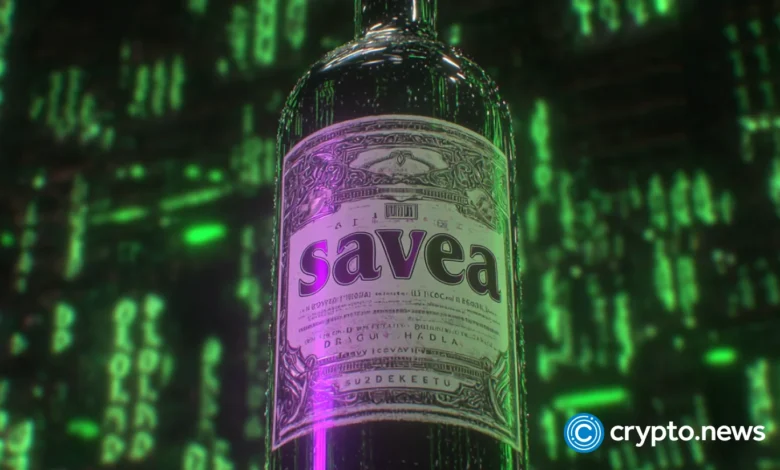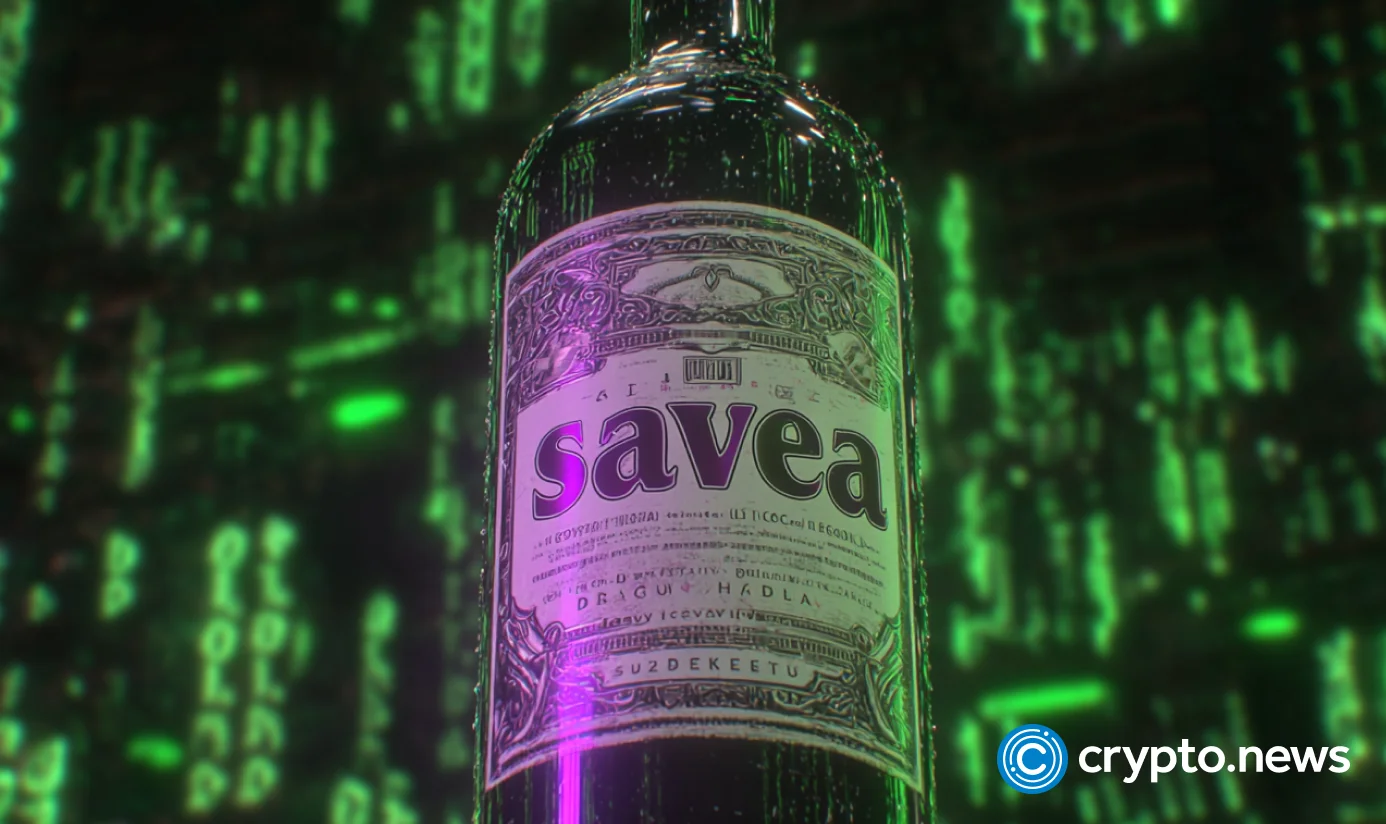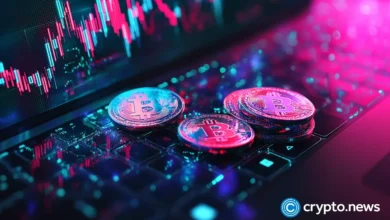Inside Savea’s plan to bring wine investing on-chain with SAVW


Savea is betting that blockchain can bring wine investment into the modern age. Its flagship product, SAVW, is a fully compliant, asset-backed token that tracks the Liv-ex 1000 index and offers on-chain exposure to the global fine wine market. In this interview, co-founder Sam Mudie explains why Savea rejected crypto’s “move fast and break things” mindset, how the platform mirrors a real-world wine index, and why the token’s design appeals to both seasoned investors and crypto enthusiasts.
Summary
- Savea’s SAVW token brings fine wine investment on-chain, tracking the Liv-ex 1000 index and backed 1:1 by physical reserves under Jersey’s regulatory framework.
- The platform offers ETF-like exposure with 24/7 liquidity, fiat and crypto access, and low redemption fees, appealing to both TradFi investors and crypto users.
- Co-founder Sam Mudie says true wine tokenization requires regulation, transparency, and real asset backing, unlike prior NFT-based projects that lacked legal or financial rigor.
Savea is a London-based fintech startup that brings fine wine investment on-chain through its flagship product, SAVW. Launched in July, SAVW is structured as a fully compliant, asset-backed ERC-20 token that tracks the Liv-ex 1000 index, which offers exposure tothe global fine wine market. Each token is backed 1:1 by physical wine reserves and issued under Jersey’s regulatory framework, giving it institutional-grade oversight while remaining accessible to a broader range of investors.
The platform offers a modern product akin to an ETF but with the speed, transparency, and liquidity of the blockchain. Savea’s infrastructure is built on a proprietary system called DESAT, which enables instant, verifiable transactions and seamless integration with both fiat and digital asset ecosystems. Investors can onboard using traditional methods, such as email and fiat payments, or connect a wallet for native Web3 access.
Savea plans to expand its model beyond wine into other collectible and alternative assets.
In one of his first interviews since the public launch of SAVW, Savea co-founder Sam Mudie explains the thinking behind the company’s regulatory-first approach, and why traditional jurisdictions like Singapore and Dubai weren’t the right fit. He also breaks down the structure of SAVW, why it’s more than just “tokenized wine,” and how Savea designed the product to appeal equally to crypto natives and traditional investors.
Mudie discusses how Savea mirrors the performance of the Liv-ex 1000 index with physical reserves, how redemptions work despite wine’s illiquidity, and why he believes tokenization will reshape how the world invests, not just in passion assets like wine, but across real estate, bonds, and beyond.
Below is the Q&A with Sam Mudie.
crypto.news: Savea describes SAVW as providing “fully compliant” on-chain exposure to fine wine. What specific regulatory approvals or frameworks are you using to achieve this compliance and how do you ensure global investors remain on the right side of regulations considering regulatory conditions differ by country.
Sam Mudie: When we first conceived Savea in 2021, we knew that regulation would be coming and would be a major factor, and decided early that we’d not take the easy route that most Web3 projects took which was to wing it for as long as possible and figure out regulation later. We wanted to tackle it head on and even help to shape it around us. Once we’d built the product and completed two MVPs, in early 2024 we started speaking to the Monetary Authority of Singapore (MAS), who outwardly presented themselves as innovation-friendly and welcoming to Web3. The regulatory solution there was nearly right, but would not allow a crucial part of SAVW: to be freely transferrable across the secondary market without further KYC and eligible investor checks. These are done on all users that buy/redeem directly with Savea, but our vision is of truly 24/7/365 and borderless liquidity, and exchangeability across the entire ecosystem.
Interestingly, the MAS was not inherently against our product design, they just didn’t want to be the first to rubber stamp it.
So we went jurisdiction shopping.
Co-Founder Lee Smith has launched a dozen businesses before, and successfully IPOd and exited two FinTechs in the last five years. He’s gone through the regulatory process multiple times, in multiple countries.
Cayman, BVI, Malta, Guernsey, Liechtenstein and others were explored. They lacked the structure, the credibility, or both.
Dubai came close, but after months of working on our VARA application, the result was the same as Singapore: “we want you to do it here, but only after another jurisdiction gives it the green light first”.
Eventually our hunt brought us to an innovative solution in Jersey, with SAVW structured as an asset-backed debt security, issued under the Jersey Financial Services Commission (JFSC) with future-proof compliance to promote and distribute directly in the UK and EU. This means our offer document is already FCA-lite compliant, we just haven’t decided to go down the very long and very expensive route of full FAC regulation. We simply don’t need it.
It does mean that SAVW is still issued under the very strict tokenization guidelines of the JFSC (50+ page offer document) including measures on KYC/AML/eligible investor processes, risk assessments/mitigations, audits, tech design and contingencies etc etc.
We have numerous JFSC-mandated controls in place to ensure ongoing compliance both in Jersey and overseas, on how SAVW is (or is not) promoted and offered.
CN: Are you making this product accessible to non-crypto-savvy investors (like traditional wine collectors or wealth managers) who might be put off by blockchain tech? Conversely, what’s the pitch to crypto natives who are used to double or even triple digit yields and rapid swings. Why should they be interested in an otherwise ‘boring’ annual wine return?
SM: Absolutely. We’re not crypto purists, DeFi degens or Bitcoin maxis. Savea is solving problems that our founder Sam has faced for over a decade in the traditional wine investment market. Blockchain is just the tech, not the product. We’re about commercial viability and user experience. Adoption comes from the mundane: reducing workflows, friction, cost and bringing something unfamiliar into the familiar without changing habits.
Savea’s app gives a familiar experience to traditional/Web2 investors, by creating an account with email & 2FA (just so happens to be a non-custodial wallet) and they can buy and redeem in fiat. It feels like a slick digibank. No jargon, no seed phrases, no signing transactions. Just piggy backing the UX they’re already used to.
Or Web3 users can connect a wallet and transact on-chain as they usually would.
With each cycle crypto-natives are burned and return expectations recalibrate. This also happens as new entrants – particularly more mature, TradFi users – bring increased volume and data, and with it reduced volatility and likely lower returns. This is not an overnight change but a gradual shift, as seen before throughout time. Once wealth creation has been achieved by an individual, priority often (although not always!) shifts to wealth preservation. Here, diversification is key: lower overall volatility and correlation, whilst maintaining a reasonable rate of return.
But the product is not for everyone! By 2030 we expect the tokenized wine investment market to be $5bn in size. We don’t need to appeal to most of the world, only our target audience. It’s not insignificant either, that a lot of people want to ‘invest in wine on-chain’ just because it’s cool and they’re the first to do it. This is a factor that underpins much of the ‘passion asset’ category, that has existed for millennia: desiring something of low volume but high value, simply because others desire it too.
CN: SAVW’s structure has been compared to an ETF or index fund for fine wine. This begs the question: why bother putting this on Ethereum at all instead of launching a normal fine wine ETF or fund through traditional markets? What actual advantages does tokenization give you and your investors?
SM: Why tokenize private credit or gold? Why not just invest in the traditional assets?
You could, but in tokenizing it, and creating commercially viable infrastructure for distributing it, you reduce the inefficiencies that plague the legacy models.
- Admin & Operations
- Traditional Fund: Handled manually: slow, limited to office hours, expensive (reflected in higher fees) and subject to mistakes.
- SAVW: Handled by smart contracts: instant transactions 24/7/365, and borderless, with automatic invoice/receipt, publicly verifiable.
- Access/ & Distribution
- Traditional Fund: Can only be bought through intermediaries with long onboarding processes.
- SAVW: Open access to all: onboarding and transacting takes 15 minutes.
- Regulation
- Traditional Fund: Have to be regulated as a fund: extremely expensive (reflected in higher fees) and complex to get, and highly restrictive – min ticket size $100k, not allowed to sell or otherwise change ownership of shares.
- SAVW: Consents from JFSC to issue as asset-backed debt-security token: institutional-grade compliance at 25% the cost of fund regulation, and tokens are allowed to be freely transferred in the secondary market.
- Shares & Assets
- Traditional Fund: Off-chain: slow issuance, opaque proof of assets and transactions, expensive (reflected in higher fees), reliant on trust and quarterly audit.
- SAVW: On-chain: tokens are exchanged immediately, all assets self-verifiable and updated live.
- Liquidity
- Traditional Fund: Shares can only be redeemed with the fund issuer, so liquidity is closely tied with their ability to sell individual, unique cases of wine.
- SAVW: Tokens can be redeemed with Savea or with any other digital asset throughout the Ethereum ecosystem (CeFi, DeFi, P2P).
- Interoperability
- Traditional Fund: Closed system: difficult to integrate with other financial products.
- SAVW: As an ERC-20, opens up protocols for lending and collateralization.
- Investors
- Traditional Fund: Strictly sophisticated investors: HNW investing $100k.
- SAVW: Anyone can invest from $100.
CN: SAVW tokens mirror the Liv-ex 1000 wine index and are fully backed by physical wine reserves. How exactly do you replicate the index’s performance that holds real assets? Are you sitting on a portfolio of wines matching the index composition, and if so, how do you handle the practical challenges of acquiring, storing, and updating such a diverse wine collection as the index evolves?
SM: Savea’s role is to mirror the performance of the Liv-ex 1000, holding assets that represent the broad composition of the index. The index price is updated monthly by Liv-ex but the composition of the index is updated annually, which gives us ample time to procure a portfolio that tracks the performance as we scale. In addition to this, we regularly review the underlying portfolio with the help of our expert buying team and have partnered with a market leading wine storage facility with a long-standing track-record storing fine wines.
CN: How has the Liv-ex 1000 index actually performed during past crises or downturns with COVID-19 coming to mind? Can its value drop significantly, and what would that mean for SAVW token holders in terms of potential drawdowns? In a severe scenario where the wine market stalls or plunges, how will Savea handle redemptions or pricing so that investor confidence remains intact?
SM: 2008 GFC, maximum drawdown was -10.6% over four months, before posting +50.7% in the following 3 years. The pandemic was actually positive for the fine wine market, as populations were stuck spending less on holidays and ‘going out’ and more on having nice things at home. Between April 2020 to October 2022, the market saw +43.7%.
It’s not immune to internal market turmoil though. The Liv-ex 1000 index is -28.5% since October 2022: the duration and extent of this correction is completely unprecedented. But it is more influenced on the supply-side (several years of record high release prices of wines – greedy winemakers) than a structural change in demand, so it will ultimately recover. For any seasoned investor, buying the dip is recommended.
To redeem directly with Savea, there are liquidity restrictions – particularly in the first few years to prioritise AUM growth and stability. Customers will only be able to withdraw 25% of their AUM per month, and there is a product-wide redemption gate of 5% total AUM per month, to prevent runs on the portfolio. These are clearly communicated on the product page.
SAVW can always be exchanged outside of Savea though, subject to demand. As an ERC-20 token, it can be bought/sold/transferred across the ecosystem: CeFi, DeFi, liquidity pools, P2P. SAVW’s price to buy/redeem directly with Savea is pegged to the index, and the value of the underlying assets (component wines) are updated daily, as proof of reserves online. As a result, in the secondary market SAVW will always trade at a premium or discount. If wine prices fall and customers want quicker liquidity than via Savea, they’ll always find a buyer in the secondary market – it just may be at a 5-10% discount to the index. One man’s liability is another man’s opportunity!
CN: Investors can redeem their SAVW tokens at any time but what does redemption involve in practice? Do token holders receive actual bottles of wine from your reserves, or a cash/stablecoin equivalent of their token’s share of the index?
SM: SAVW can be redeemed directly with Savea as a redeemer of last resort in exchange for USDC or traditional Fiat currency, subject to redemption limits (please see T&C’s on the app page.) SAWV can also be sold instantly on-chain peer-to-peer and (in the near future) via third-party exchanges.
SAVW holders have no right to underlying assets (unless in the event of company liquidation), only the value of the index.
CN: As a follow up to the above question, how exactly do you facilitate redemptions instantly at any hour for an illiquid physical asset? Are there limits, fees, or delays we should be aware of when someone tries to cash out a large position in SAVW?
SM: The key difficulty in the legacy models is that for a single customer to get liquidity, specific physical cases of wine must be sold. Say an investor wants to redeem $100k, it’s likely that the company’s sales team needs to sell 150 different cases of wine for them. That’s potentially 150 individual sales to different customers (think of the time and admin that requires). Some of the wines will sell quickly, but some will take 12 months. Now multiply that for 100 customers each trying to sell 150 different wines. Liquidating $10m entails up to 15,000 unique subsequent transactions to different wine buyers. Each one involves emails, calls, manual invoices/receipts, bank transfers, physically moving wine across the country. These all add time, friction and cost.
By structuring on-chain, as an index, you reduce (not remove) the pressure on selling any physical wines. All you need to do is find a buyer for SAVW, where SAVW represents ‘the wine market’. 1 product to resell instead of thousands, and redemption and resell process happens in an instant, via smart contract. No emails, calls, invoices/receipts, bank transfers or need to move a single bottle of wine.
Redemption limits as above, exit fee of 2% (far below market standard of c.10%). We hold a surplus of 5% of AUM in USDC to manage the intra-day liquidity.
CN: Fine wine is by definition a very illiquid asset with infrequent trading, yet SAVW will trade continuously on Ethereum. How will you ensure there’s sufficient liquidity for SAVW tokens and that their market price remains aligned with the underlying wine index value? Do Savea or partners act as market makers or arbitrageurs to correct any significant discount/premium to NAV?
SM: In part answered above, but some more context…
It is relatively illiquid but you may be surprised how often it actually does trade. A single 1st Growth Bordeaux might see 10-50 cases (120-600 bottles) trade per week through online platforms or direct trade.
Savea guarantees the price of the index, if bought/redeemed directly. It is our job to ensure our own reserves are at least 100% the total marketcap of SAVW. We are in talks with market makers for secondary market stability/liquidity provision.
CN: Savea calls SAVW the world’s first tokenized wine index, but others have also tried blending wine investment with blockchain. For example, there have been NFT marketplaces for individual bottles and even a project issuing a wine-backed token “like an ETF” (Wine Vault’s CORK on Tron). What sets Savea apart from these earlier attempts?
SM: So far, there is no truly ‘wine investment’ on-chain. There are on-chain trading platforms, where you buy or sell NFTs representing bottles or cases of wine but they’re just marketplaces. These are more like wine merchants, but on-chain. No investment service or management. Also, I’m yet to see a single example where they have a legally enforceable link between the digital wine (NFT) and physical wine. It’s buzzwords, hype and forcing a solution upon the wrong problem.
Despite their claim to be like an ETF, Wine Vault’s CORK was nothing of the sort. It lacked regulatory approval, offered no transparency into reserves or pricing, and had no enforceable legal link between the token and the underlying wine. It was issued as an NFT tied to a DAO, structurally and legally disconnected from any serious financial product. The team were unknown and unproven in both the wine investment world, and FinTech. The project made bold claims but never built the infrastructure or governance to support them, and ultimately disappeared within a year.
By contrast, Savea is regulated, transparent, and institution-ready. We’ve built an investment product, not a collectible. SAVW tracks a benchmark wine index, is 100% asset-backed with full reserve attestation, and is issued as an asset-backed debt-security token under the oversight of the Jersey Financial Services Commission. It’s a fully compliant investment instrument designed for real capital. One of our Co-Founders (Sam, me!) previously managed $350m of wine investment for HNWs around the world; the other a serial FinTech entrepreneur with 3 exits totalling $3bn in value; both with extensive experience in blockchain design.
CN: I am personally extremely bullish on asset tokenization. One report forecasts up to $30 trillion in tokenized assets by 2030. I find this figure hard to believe. Do you share this optimistic outlook? What do you believe will be the primary drivers in reaching the “trillions” scale? Are passion assets going to ride the wave of tokenization in a meaningful way, or do you think the lion’s share of that growth will come from more conventional assets (stocks, real estate, bonds, etc) being tokenized?
SM: Forecasts vary massively, most closer to $10tn by 2030. But I am very bullish and can certainly see the $30tn being reached. We’re past the point of proving the technology is valuable. Every major financial institution, government or even general corporation agrees that future rails are blockchain based. The challenge is not in adoption, it’s infrastructure.
What people want is simple: a better version of a product or service, without having to change their habits.
Whether we’re talking about tokenized private credit, T-bills, stocks/ETFs, real estate, gold, art, wine. It’s been demonstrated that tokenization has the potential to improve accessibility, transparency, security, liquidity, scalability, and reduce friction and cost. But most solutions currently are still a bit clunky and require a base level of Web3 knowledge.
But when Coinbase partners with Shopify to facilitate online payments in crypto, or Robinhood offers tokenized shares and ETFs, the Web3/tokenized product piggy-backs on existing infrastructure and UX. Then growth is exponential.
Dubai ran what is, in my opinion, the first truly tokenized real estate pilot a couple of months ago. Before that came messy SPVs that were tokenized with questionable ownership rights. The global real estate market will be $400tn by 2030? Tokenized penetration of 5% would put tokenized real estate by itself at $20tn.
Ambitious, but not that crazy a forecast.
Source link





